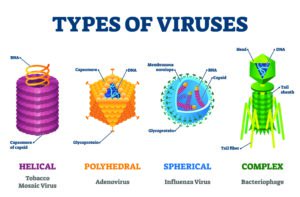Note: This article continues the Pandemic series with Pandemic Part 2: Pandemics of the Past and Pandemic Part 3: Getting Your Flu Shot and Other Vaccines.
Note: The Pregistry website includes expert reports on more than 2000 medications, 300 diseases, and 150 common exposures during pregnancy and lactation. For the topic Coronavirus, go here. These expert reports are free of charge and can be saved and shared.
__________________________________
Coronavirus, epidemic, pandemic, COVID-19, SARS-CoV-2, SARS, MERS, ICU, and the N95 mask –so many terms and acronyms floating through the news cycle that you might think you’re in a NASA space mission. Except that it’s affecting your daily life and it can all be rather confusing, so we’re trying out a blog series that I’m calling Pandemic. The purpose is to unpack some of the issues, terms, and historical perspectives. What you are reading now is Part 1, where I’ll present the very basics, concepts that you may have been afraid to ask, because the big media aren’t taking the time to explain them, because, well, they are busy keeping up with the developing story. I’m talking about basics like what is a virus and how do coronaviruses, and this particular coronavirus, fit into the virus categories. Unpacking this will carry us through a discussion of the basic biology of viruses, and why they are different from other biological agents that can cause disease, such as bacteria. So let’s delve into it.
A virus is not a cell, but rather is a package of two kinds of biological material. The outside of the virus is a shell of proteins, called the capsid, or simply the protein coat. Embedded within the capsid is a molecule of genetic material, which can be either DNA or RNA, but not both.
You have probably heard of DNA, the molecule that stores genetic information in your cells, and indeed in all known cells on Earth. RNA has many functions in cells and is similar to DNA, but only RNA viruses use RNA for storing genetic information.
Whether DNA or RNA, the genetic material within a virus consists of genes that carry instructions for reproducing the viral genetic material and the surrounding viral coat in order to make more virus particles. That’s it. Unlike a living cell, a virus carries no reproductive machinery. To reproduce its genes an its protein coat, a virus must hijack the machinery of a cell that it infects, and sometimes when this happens it causes disease.
RNA viruses include most of the notorious viruses of our time, including Ebola, influenza, West Nile, measles, and the coronaviruses, which get their name because of spikes that project outward from their protein coats, giving a crown-like (coronal) appearance when they are viewed with an electron microscope. Of the many different coronaviruses, only some cause disease in humans, including 15 to 30 percent of common colds, but there are three coronaviruses known to cause very serious disease in the respiratory system, such as bronchitis, and especially pneumonia. Influenza, the flu, can do this too, as can measles and a range of other RNA viruses, but the three bad coronaviruses do it more frequently in those who are infected.
So what are these three coronaviruses? One of them, first identified in 2003, causes a disease called severe acute respiratory syndrome (SARS). The second one causes a disease called Middle East respiratory syndrome (MERS). First recognized around 2012, MERS is also a severe respiratory syndrome, but the name SARS had been taken already for the previous virus. Today, we are dealing with yet another coronavirus that causes a kind of SARS, although only in a fraction of people who are infected. This new virus is now called SARS-CoV-2, which might lead you to ask about the term COVID-19. The latter term simply designates the name of the disease that is caused by the virus SARS-CoV-2.
So how does the disease COVID-19 compare with the common seasonal flu and with SARS and MERS? Well, as with the seasonal flu, the symptoms include cough, fever, breathing difficulty, but COVID-19 is more deadly than the flu for those who get it, although not as deadly SARS and MERS. Indeed, MERS killed at a rate of more than 34 percent, whereas SARS-CoV-2 has killed approximately 7,200 people as of the writing of this article, or 3.4 percent of those who are infected. In contrast, seasonal flu usually kills approximately 0.1 percent, but that tiny percentage amounts to 12,000 – 61,000 people in the United States (and at least ten times that number worldwide), according to estimates by the US Centers of Disease Control and Prevention (CDC). That’s because 9 to 45 million people in the US get the flu each year. This makes the flu sound like a bigger problem, except for one thing: COVID-19 is spreading very quickly, because, apparently, it is much more contagious than the flu, and because it spreads from people whose symptoms do not begin until days after they are infectious, and from people who are infected and never develop symptoms, or develop only minor cold symptoms. As a consequence, COVID-19 has been declared a pandemic –a disease that is spreading worldwide. And that’s the reason for all of the precautions that are affecting your everyday life.



